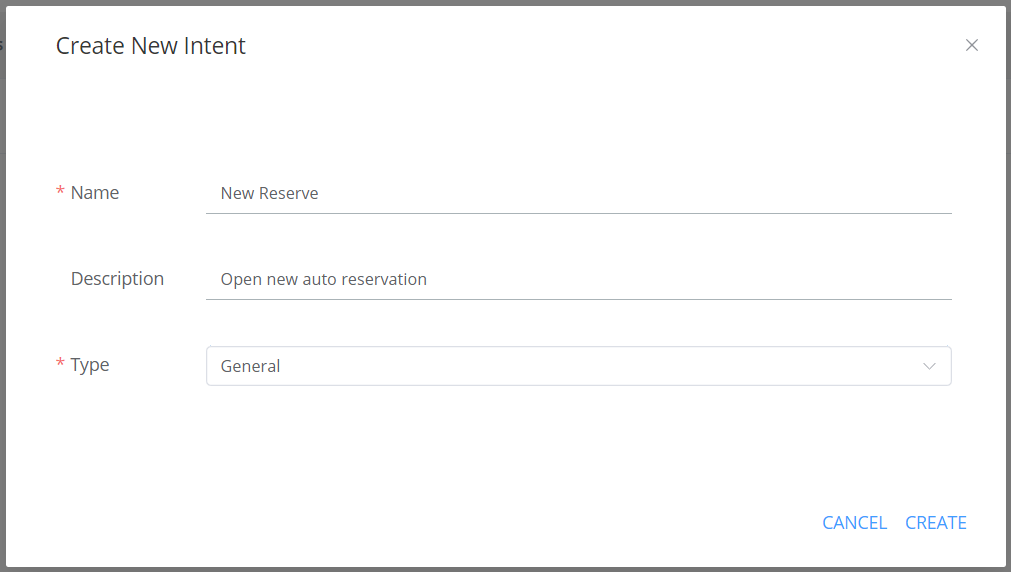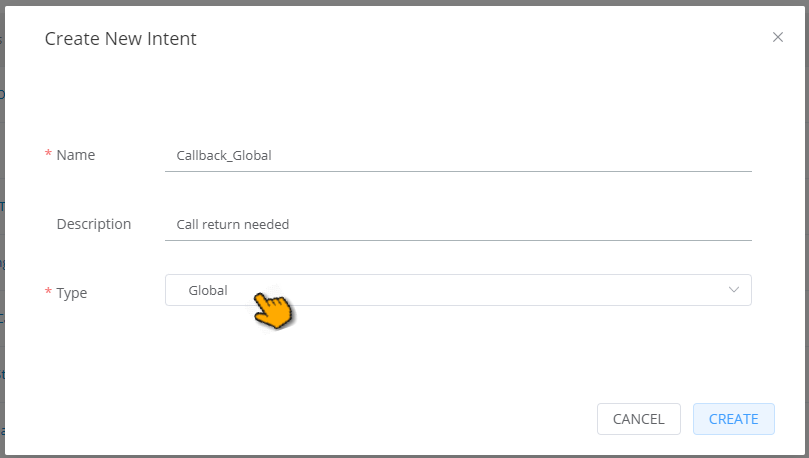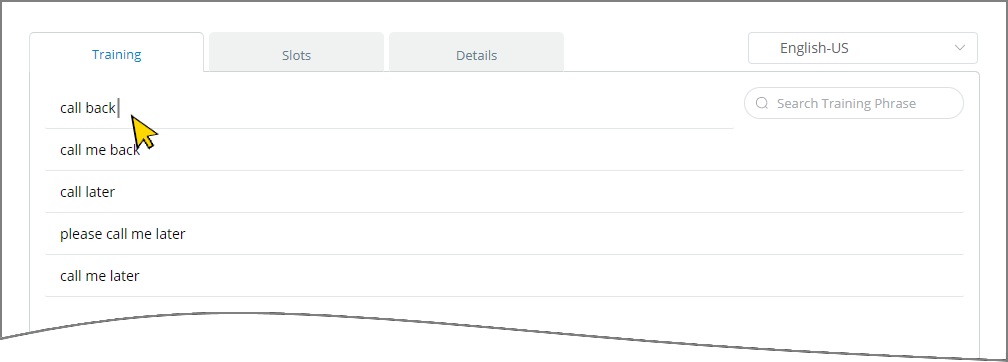Creating an Intent
To create a new Intent for a VA in U-Self Serve:
Go to the Intents page of the Virtual Agent which contains the list of Intents available for the selected VA.
At the top of the page, click Create New Intent. The Create New Intent dialog is displayed:

Enter the Name of the Intent.
Enter a Description for the Intent.
Select the Type of the Intent.
General: The mapped Intent triggers whenever it is detected in the user response.
Agent Transfer: The conversation is immediately transferred from the VA to a Live Agent whenever an Agent Transfer request is detected in the user response.
Global: Generic or commonly-used Intents can be categorized as Global. Examples: Yes, No, Call Back Later, etc. A Global Intent does not require any mapping. For more details, click here.
Click Create. The newly created Intent is saved and listed in the Intents page.
You can continue to configure the new Intent by adding Training phrases, mapping Slots from an Entity, or by mapping it to an Intent Flow.
Best Practice: It is highly recommended to create Outofscope Intents and Train the same to improve Intent recognition. To learn more, refer Out of Scope Intents.
Creating a Global Intent
A Global Intent is a type of Intent that is generic or commonly-used in the current Virtual Agent. Some examples include: Yes, No, Call Back Later, etc.
Like all Intents, a Global Intent can be assigned to user Training Phrases. However, a Global Intent does not use Slots to store its Entity values and is not mapped to a X-Designer Intent Flow. When a Global Intent is detected, U-Self Serve directs the chat in the context of the current activity or the currently-running Flow.
One or more Global Intents can be used as exit points in a X-Designer Slot Resolver. This can greatly simplify the design of an Intent Flow, since it reduces the need to wait for user responses and to manually add other logic elements (e.g., Decision Points) to direct chat outcomes.
To create a Global Intent, choose the Global type, as show below:

Then, in the Training panel, add Training Phrases that helps the U-Self Serve VA to detect the generic user response.

Tip
To learn more about how to use a Global Intent in a Slot Resolver, click here.